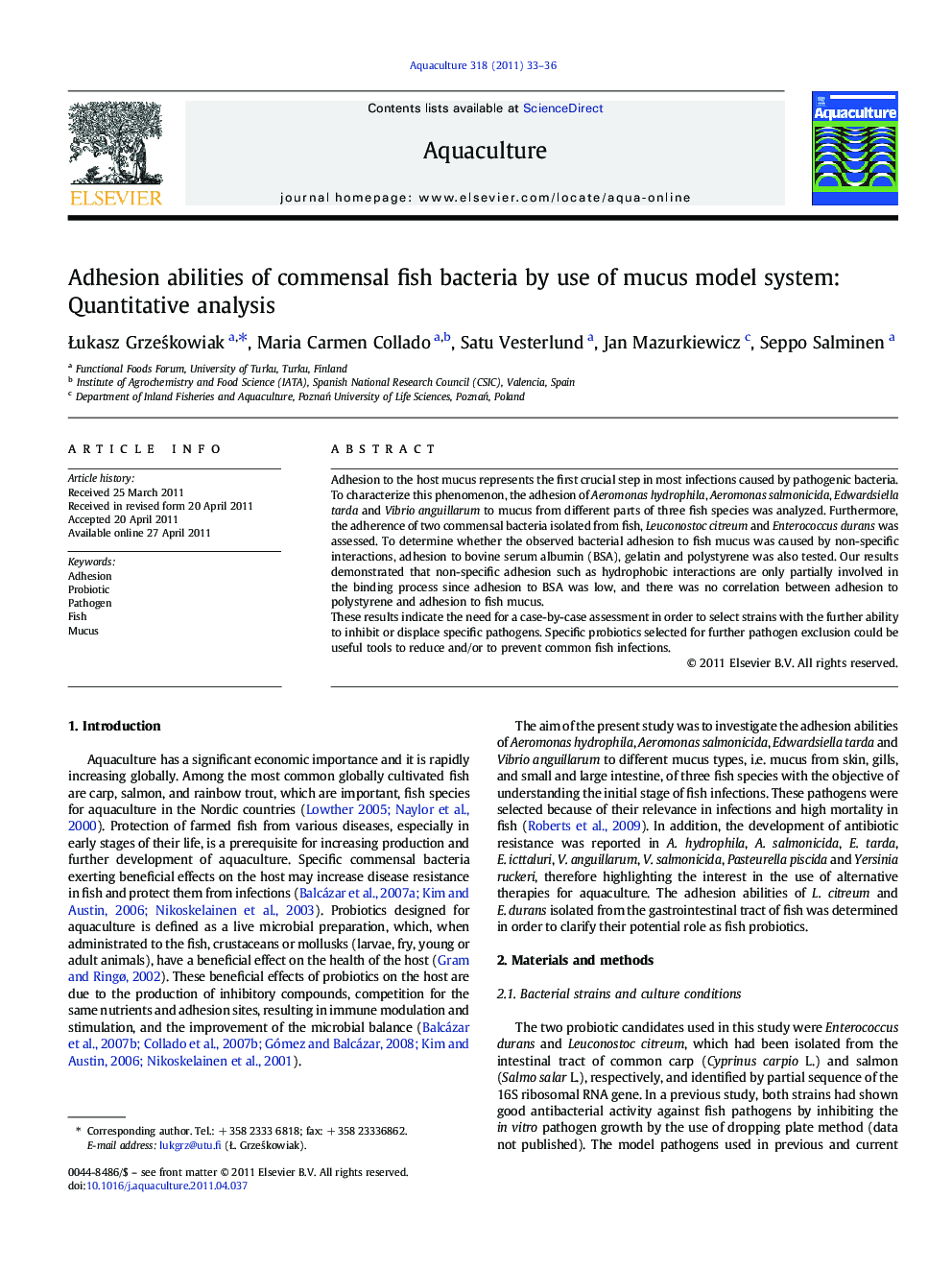| Article ID | Journal | Published Year | Pages | File Type |
|---|---|---|---|---|
| 2422896 | Aquaculture | 2011 | 4 Pages |
Adhesion to the host mucus represents the first crucial step in most infections caused by pathogenic bacteria. To characterize this phenomenon, the adhesion of Aeromonas hydrophila, Aeromonas salmonicida, Edwardsiella tarda and Vibrio anguillarum to mucus from different parts of three fish species was analyzed. Furthermore, the adherence of two commensal bacteria isolated from fish, Leuconostoc citreum and Enterococcus durans was assessed. To determine whether the observed bacterial adhesion to fish mucus was caused by non-specific interactions, adhesion to bovine serum albumin (BSA), gelatin and polystyrene was also tested. Our results demonstrated that non-specific adhesion such as hydrophobic interactions are only partially involved in the binding process since adhesion to BSA was low, and there was no correlation between adhesion to polystyrene and adhesion to fish mucus.These results indicate the need for a case-by-case assessment in order to select strains with the further ability to inhibit or displace specific pathogens. Specific probiotics selected for further pathogen exclusion could be useful tools to reduce and/or to prevent common fish infections.
